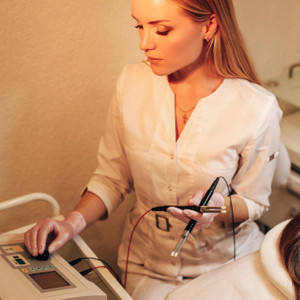
General definition: Microcurrents are voltages that are far below one volt
Our human thinking usually assumes that "more is better than less". In biology, however, this actually applies only to a very limited extent and sometimes reverses its effect.
If you think of hormone release in the human organism, for example, tiny amounts are vital, but too much can lead to disaster.
We owe the research of microcurrents to the alternative practitioner A.E. Baklayan. In his bioenergetic tests he came to the conclusion that in the supporting programmes, i.e. the "well-being programmes of harmonic vibrations", microcurrents (voltages below one volt) brought better results.
Podcast Microcurrent Frequency Therapy
Thus, alternative practitioner A.E. Baklayan began to work with voltages below one volt and was completely surprised to find that some of the effects were actually stronger than the usual 2.2 to 15 volts usually used by commercially available devices.
He then used these low voltages systematically and found that his patients also felt a much more intense effect than usual.
The Arndt-Schultz law (1835 -1900) states that weak stimuli promote, strong ones inhibit and the strongest ones paralyse. The alternative practitioner A.E. Baklayan deduced this and put forward the following thesis "Weak stimulation raises physiological activity and very strong stimulation suppresses or destroys activity"
And with this, the alternative practitioner A.E Baklayan came to the same conclusion as we did:
